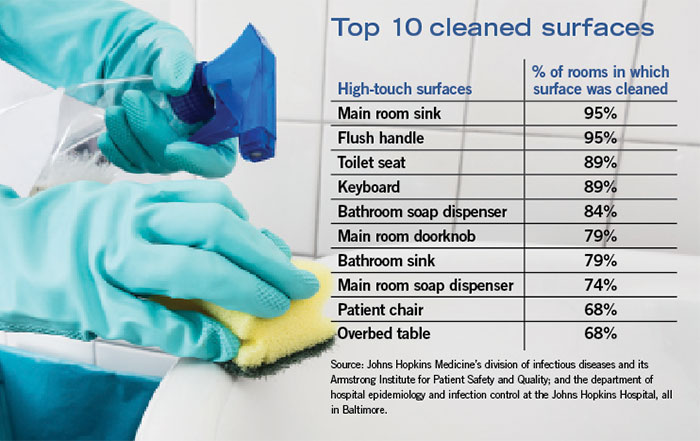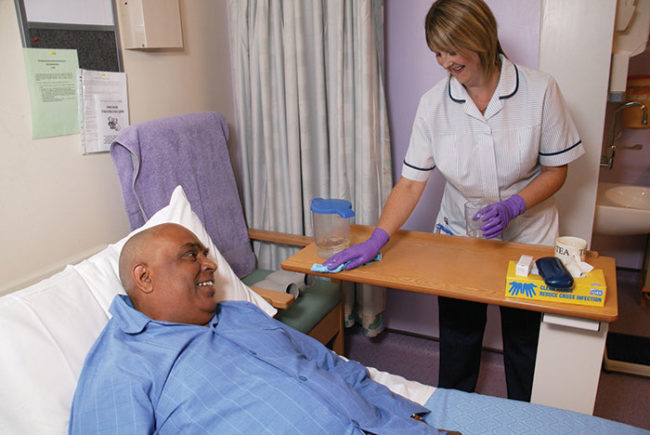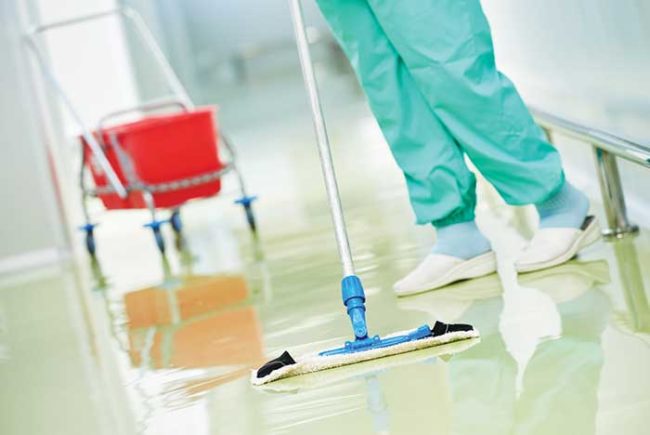
Human factors engineering (HFE), the scientific study of how to optimize human performance and processes by designing and redesigning work systems, has been used effectively to improve hospital quality and safety by doing such things as reducing medication errors and readmissions.
Now, a team of researchers from Johns Hopkins Medicine’s division of infectious diseases and the organization’s Armstrong Institute for Patient Safety and Quality has embarked on a three-year study aimed at using an HFE approach to measure and improve patient room cleaning and disinfection processes.
The multifaceted research, funded by the Centers for Disease Control and Infection Prevention's Prevention Epicenter Program, will explore the work systems, tools and technologies that environmental services (ES) associates deploy in cleaning and disinfecting patient care areas. The study also will cover training, education and the degree to which ES workers are valued within a hospital’s organizational culture.
“We are doing observations of room cleaning processes and interviews with environmental services workers and nurses who typically work with or interact with environmental services associates. Guided by an engineering framework, the in-depth, systematic and multifaceted analyses help us understand what some of the barriers and challenges to patient room cleaning tasks are, what strategies environmental services associates have developed to get rooms cleaned in a timely manner, and what ideas various stakeholders have for improvement,” says Ayse P. Gurses, Ph.D., M.P.H., associate professor of anesthesiology and critical care medicine at the Johns Hopkins University School of Medicine and faculty member at the Johns Hopkins Armstrong Institute and Malone Center for Engineering in Healthcare.
Although still early in their work, the research team has shared some preliminary data based on observations of seven environmental cleaning associates who cleaned 70 rooms. They noted that many surfaces such as bedrails and cabinets were cleaned only about half the time or less, but this wasn’t a matter of ES workers being inattentive or careless, researchers say.
Rather, a variety of factors contributed to this situation, such as a patient resting in the bed at the time of the room cleaning or items were in use. In addition, other health care workers sometimes asked environmental services associates to leave so that they could perform clinical procedures.
Anping Xie, Ph.D., human factors engineer, faculty member at the Armstrong Institute and assistant professor of anesthesiology and critical care medicine at the Johns Hopkins University School of Medicine, says that cleaning bedrails posed particular challenges.
“The care and comfort of patients are paramount. One of the reasons that bedrails are not cleaned in a consistent manner is because it’s hard to clean these surfaces without disturbing the patient,” Xie says.
Another important research focus is how ES workers are viewed and valued by other health care staff and whether ES workers feel connected to the units in which they work and to their mission in infection prevention.
“Part of the intervention that we’re doing is making sure front-line environmental services associates are involved in unit staff meetings so that they can understand how their work contributes to safety issues and feel that they are part of the culture of the unit. It is important that there is transdisciplinary collaboration with ES, nursing and other health care workers in the unit,” says Jennifer Andonian, M.P.H., C.I.C., infection control epidemiologist at Johns Hopkins Hospital.
Clare Rock, M.B.B.Ch., assistant professor of medicine at the Johns Hopkins University School of Medicine and faculty member at the Johns Hopkins Armstrong Institute on the team, says researchers will look at some specific types of infectious diseases such as Clostridium difficile, and examine the impact of their human factors engineering-based intervention on removal of this bacteria in the patient environment.





